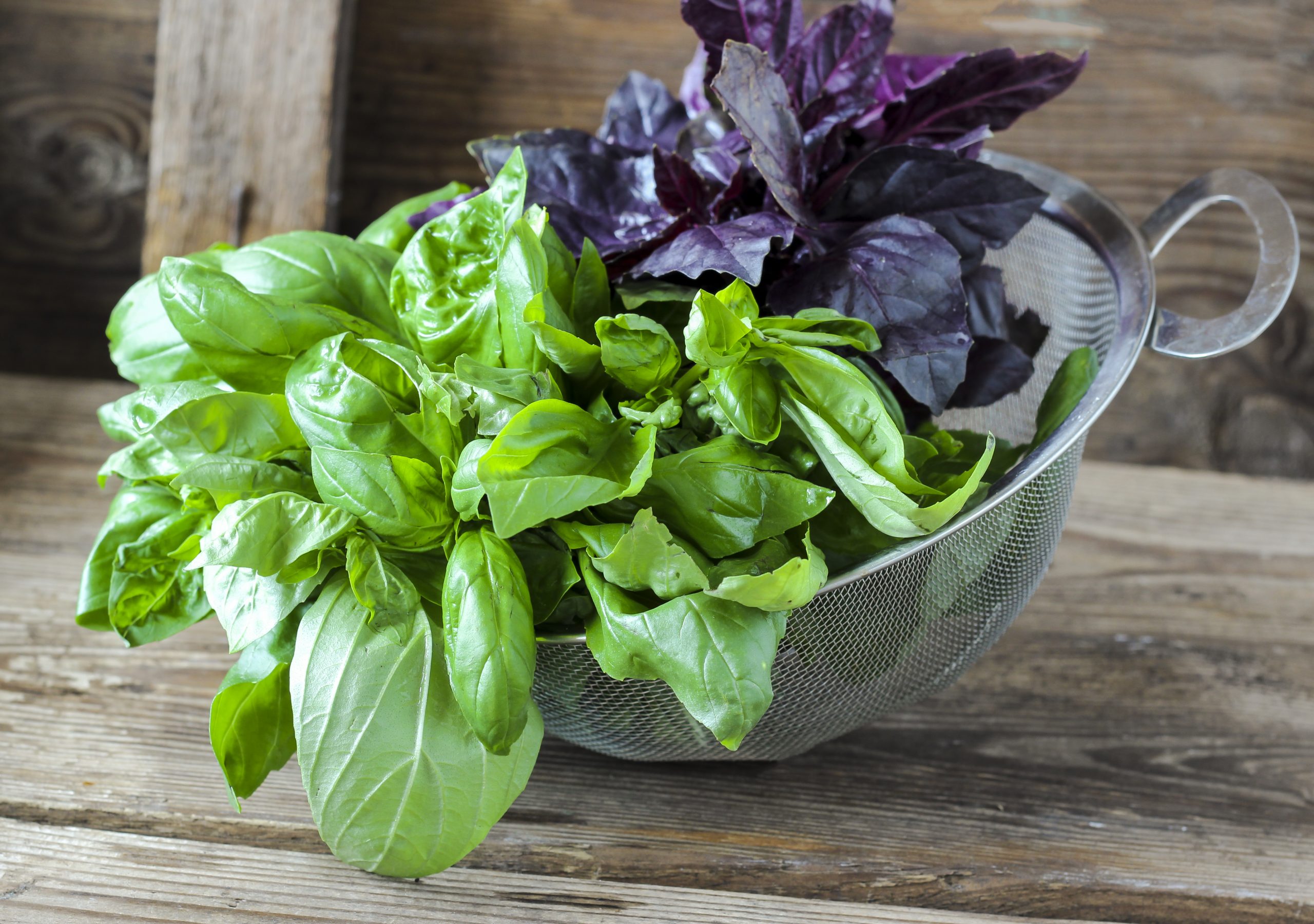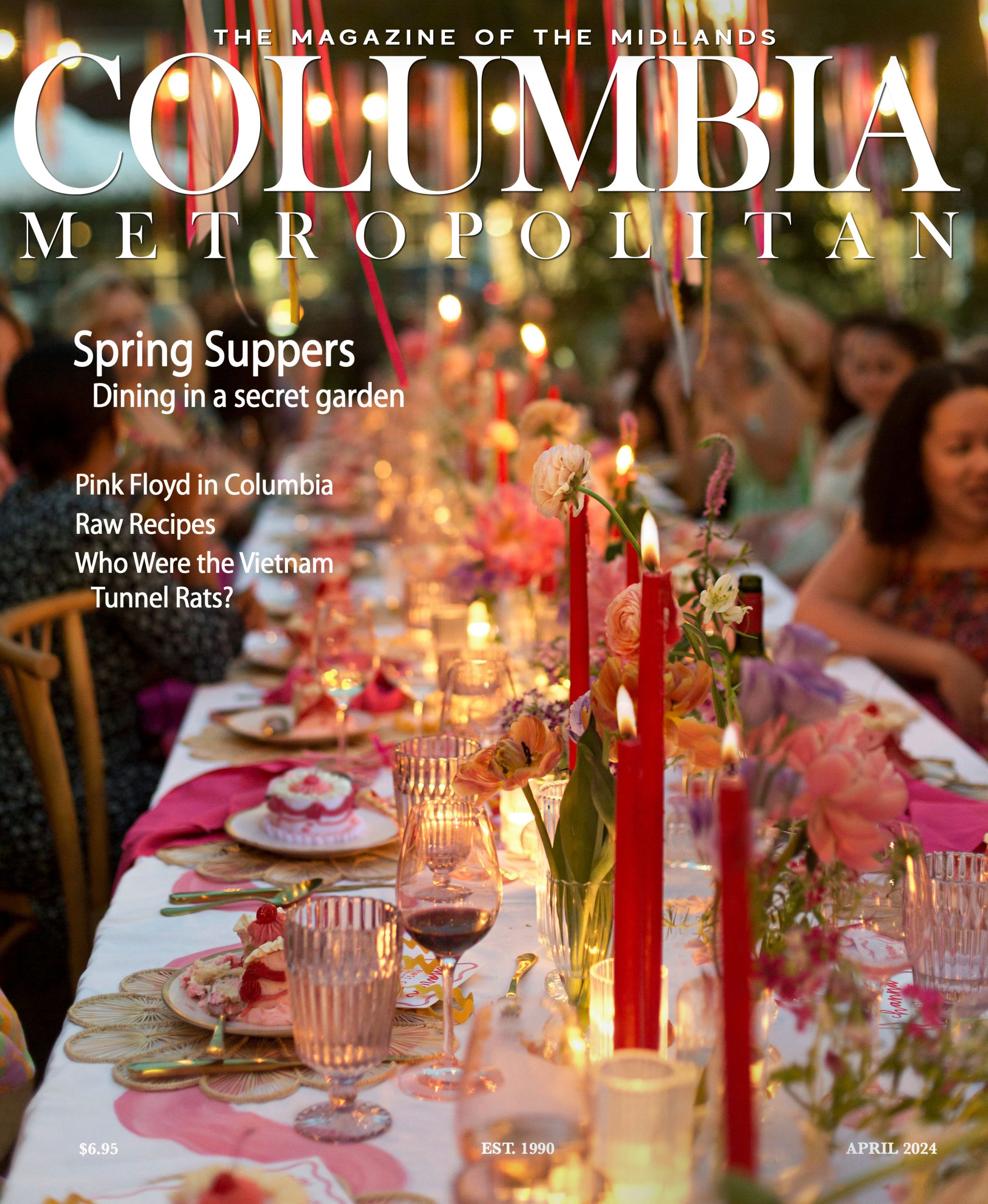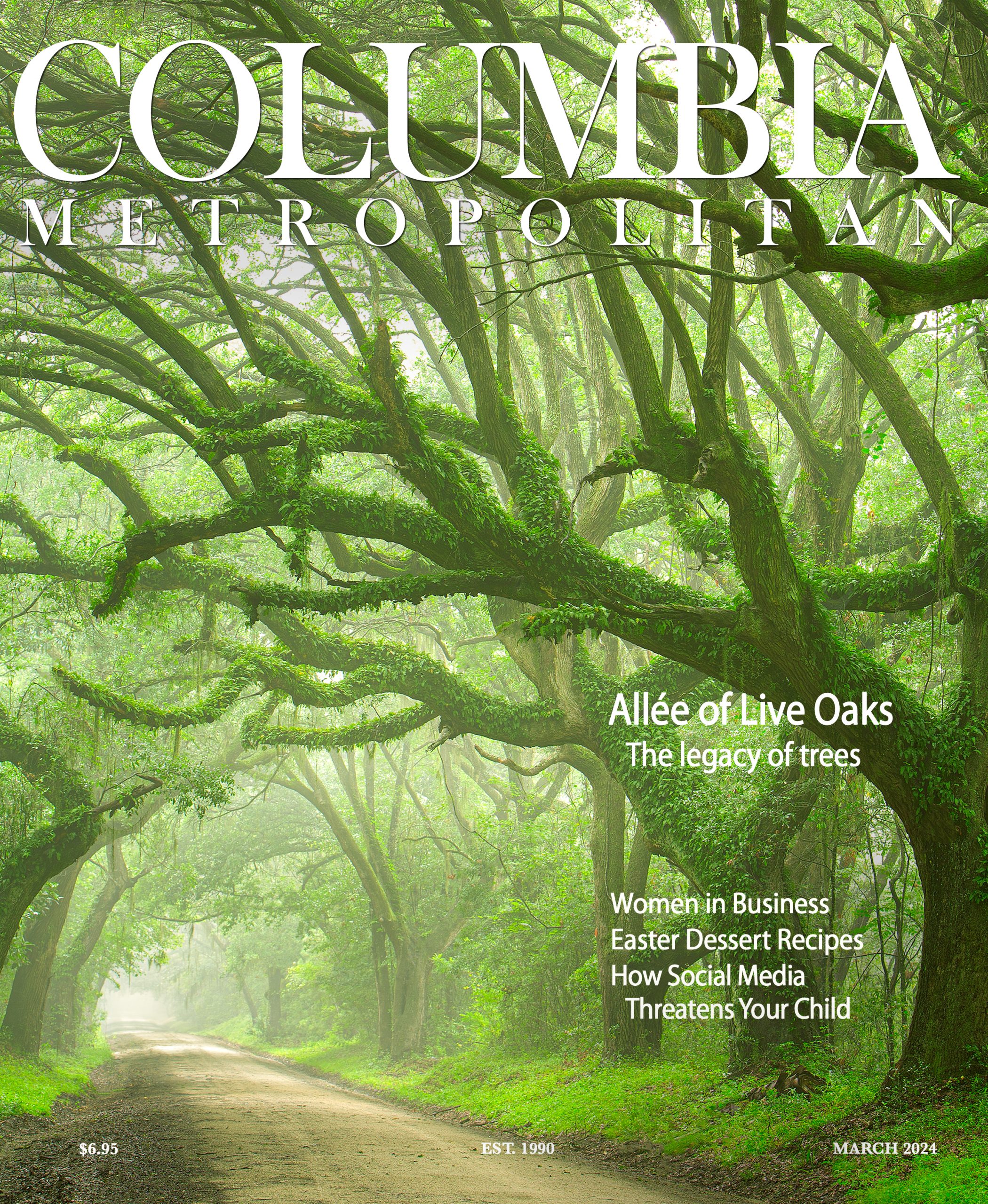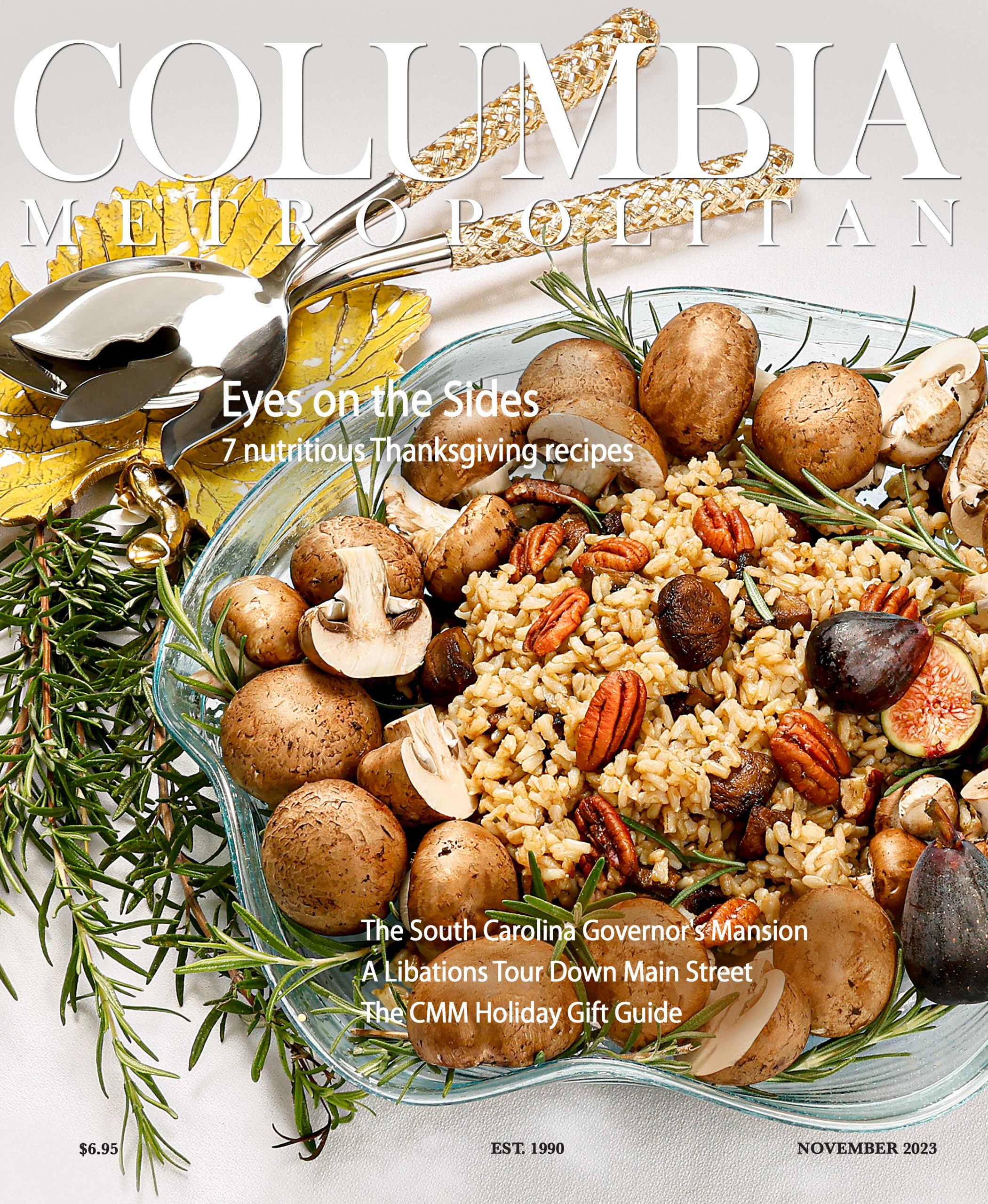
The more you harvest basil, the bushier and more prolific the plants will be. Many varieties have interchangeable culinary uses.
“Pounding fragrant things — particularly garlic, basil, parsley — is a tremendous antidote to depression.” — Patience Gray
Beautiful basil is an aromatic, herbaceous plant of the genus Ocimum in the mint family Lamiaceae. Thought to be somewhat “promiscuous” by nature, it may have up to 160 species. Basil’s chemical constituents offer many scent and flavor variants including cinnamon, cloves, tarragon, licorice, camphor, citrus, anise, mint, eucalyptus, and thyme. It is the quintessential summer herb; when the weather is hot, it couldn’t be happier. Highly sensitive to cold, the leaves develop an intensity of flavor during the summertime. They pair effortlessly with the cornucopia of peak-of-flavor vegetables and fruits. Basil has a special affinity for tomatoes and heightens the taste of squash, eggplants, green beans, bell peppers, peaches, melons, and berries, just for starters.
Pesto — Green Gold
Italy’s iconic Pesto alla Genovese is the mother sauce of herbs and the most popular use of basil. It originated in the Liguria region on the “Italian Riviera,” which is the area famous for growing Genovese basil DOP or Protected Denomination of Origin. The word pesto is from the verb pestare (“pounded”), a culinary technique from ancient Rome. A marble mortar and wooden pestle are used to reduce garlic, basil without the stems, pine nuts, extra-virgin olive oil, and Parmigiano (with a little Pecorino) to a creamy paste. Pesto adds amazing flavor to many dishes — even shrimp and grits!
Size Matters
Genovese (O. basilicum) is the most admired of the “sweet basils” — a catchall term — and will enliven your cooking from pesto to pie. The leaves exude an intoxicating scent blend of French tarragon, cinnamon, and cloves. The taste and texture of basil grown in Liguria is exceptionally delicate. Harvested young, the entire plant is pulled when about 6 inches tall. The oval, bright green leaves are medium to small. In American gardens, Genovese is usually grown to a larger size.
Basil History: Snakes in the Garden
Basil is native to tropical Africa and Asia. Its name comes from basileus, which is Greek for “king.” For thousands of years, basil’s benefits to human health have been recognized. Its essential oils have significant antimicrobial and antifungal activity against bacteria and some fungi, yet basil has been surrounded with more superstition than any other herb. In the Greco-Roman era, scent and magic were intertwined, giving it a split personality; some considered basil a “devil plant” embodying misfortune. If pounded and placed under a stone, basil would breed scorpions! Take a whiff of basil, and scorpions would grow in your brain!
These fears were likely fueled by the mythical basilisk — a snake-like dragon that could kill with a mere look, as all Harry Potter fans know — and also by the very real venomous horned adder and hooded king cobra. However, Roman scholar Pliny the Elder believed basil had many positive attributes. He catalogued them but noted that basil was an antidote to the bite … and the glance … of a basilisk! English botanist Nicholas Culpepper wrote that herbalists “rail at one another, like lawyers” in their disagreement over the herb. In spite of its shortcomings, basil is considered a potent love charm in many countries and is called “kiss-me-Nicholas” (bacia-Nicola) in Italy, where it’s synonymous with love.
Basils — All in a Row!
The season to savor basil is short — select two or three types to plant in a large patio pot or garden patch. Consider the variations in fragrance, flavor, color, and size when choosing. To prevent flowering, trim off basil tops regularly. Once it begins, leaf growth comes to a halt and flavor declines. The more you harvest, the bushier and more prolific the plants will be. Many varieties have interchangeable culinary uses. To preserve their flavors, stir leaves into foods during the final minutes of cooking. Some of the selections include:
• Showy purple-leaf basils (O.basilicum var. purpurascens) have the attributes of green basil and are rich in anthocyanin compounds — a commercial source of food color. ‘Crimson King’ of the Genovese-type has beautiful burgundy leaves and a licorice scent. Steep fragrant sprigs in lemonade or a jar of white wine vinegar; they will take on a delicate pink shade.
• Several basils (O. basilicum var. crispum) have Jurassic-size leaves and are fun to grow and eat. Napoletano’s aromatic foliage has an intense, spicy, anise flavor and green, ruffled leaves that grow to 5 inches. ‘Lettuce Leaf’ has giant, crinkly leaves but a milder flavor. Substitute for lettuce leaves and use for layering, wrapping, rolling, or stuffing.
• The “queen of fragrance,” ‘Marseille’ is alluring to butterflies and bees. Its sweet, mild, licorice flavor is perfect for pistou — a pesto variation from Provence, France. This dwarf basil makes a beautiful low hedge for walkways.
• Warm, spicy ‘Cinnamon’ basil (O. basilicum), or Mexican basil, has a cinnamon scent and flavor that complements Mexican and Middle Eastern dishes. It was grown on the International Space Station.
• ‘Siam Queen’ (O. basilicum var. thyrsiflora), is an All-America Selections winner. Thai basil has narrow, serrated leaves and a musky scent laced with cloves. It retains its spicy flavors when cooked at higher temperatures. Indispensable in Thai cooking and the Vietnamese soup phỏ, Thai basil is bai horapa in Thailand.
• Love lemon? ‘Mrs. Burns’ Lemon Basil (O. basilicum x citriodorum) has large leaves that are strongly perfumed with lemon essence; just give them a little squeeze! Award-winning ‘Sweet Dani’ is especially high in essential oils with a bright lemon flavor and scent. It dries particularly well.
In ancient lore, the early Romans and Greeks believed strongly in the mystical charms of basil — just like many modern-day cooks! While its powers won’t conjure up scorpions and dragons, it can transform meals into magical and flavorful experiences.










